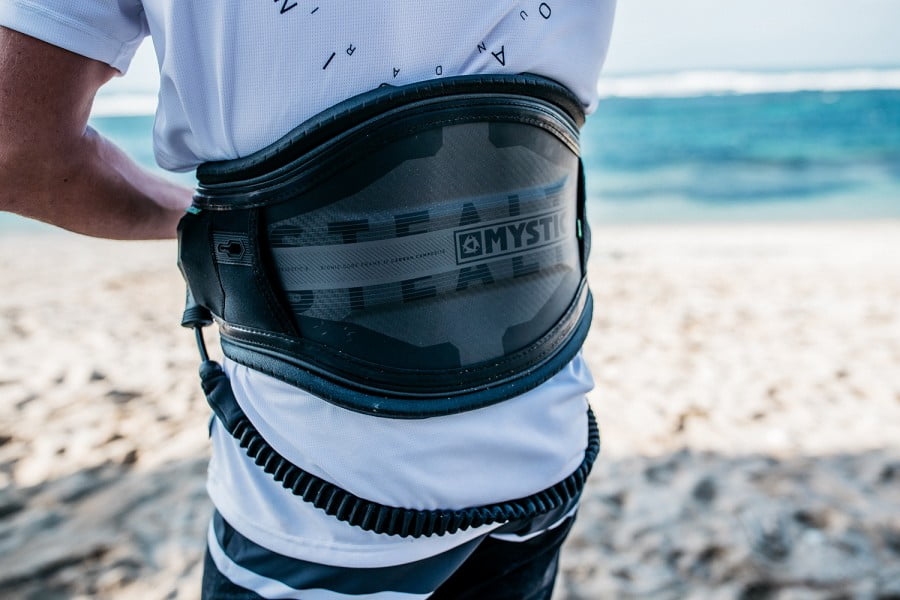
Welcome to our harness buyer’s guide. The kitesurf harness is what transfers the power of the kite to the rider’s body. Like many components of the kitesurf kit, these evolved from their use in another water sport; namely windsurfing, and current designs still use a spreader bar and inverted hook as a form of power transfer. The market is packed full of different iterations, with manufacturers vying for sales through the latests designs, materials, concepts and models; women’s fit, men’s fit, some that prioritise warmth over performance, carbon fibre, soft shell, hard shell… It can be a bit of a mind boggle when trying to decide what’s right for you. Let’s break it down in this harness buyer’s guide.
The two main design types are seat and waist harnesses.
Seat Harness
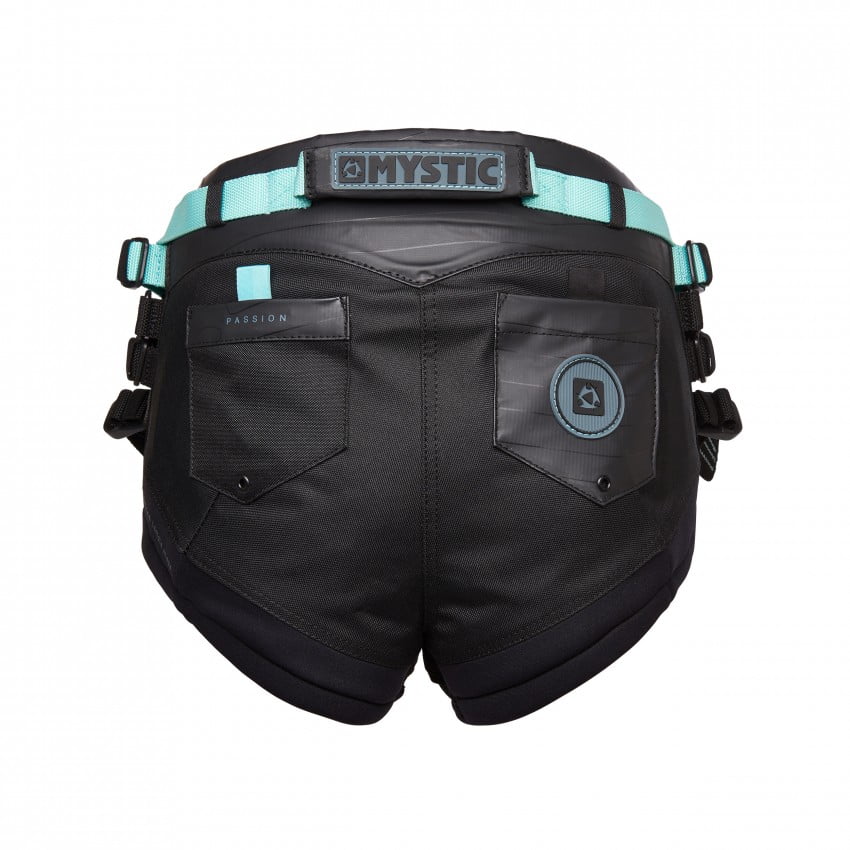
Advantages
Body Position
These are a great choice for beginners. When learning to kitesurf, the ideal placement of the spreader bar is in front of the lower torso. Seat harnesses, with the addition of straps between the legs, ensure that the bar remains ideally placed by preventing the harness from riding up the torso. This tends to be a common occurrence with beginners who instead use waist harnesses, as the kite spends a lot of time above their heads, and is therefore liable to pull upwards on the harness. For this reason, they are also a good choice for foil kite users. Foil kites generate pull nearer the top of the wind window, so tend to pull upwards.
Less Demanding
They also tend to be more comfortable for cruising and long sessions. Keeping the kite pull on the waist requires almost no back strength for transferring power; the power is delivered solely through the legs. This makes them a logical choice for those with back pain or medical complications. They have also found favour with speed kiters who need to put down high levels of power.
Selling On
Owing to their demand from other leaners, waist harnesses are easy to sell on to other individuals and schools once redundant to you; especially as they can be used with other water sports, such as windsurfing.
Limitations
Comfort (for some)
Some riders find the addition of leg straps uncomfortable, though this can often be resolved with appropriate sizing and fitting.
Tricks
Lower spreader bar positions make unwanted rotations whilst jumping more likely. This is also less favoured for dynamic riding types that demand a lot more bar work, such as freestyle and kite looping.
Flexibility
Reduced leg movement is a sacrifice of their comfort. This can be a hindrance when progressing onto highly dynamic riding styles that require lots of lower body movement; such as surf and freestyle.
Waist Harness
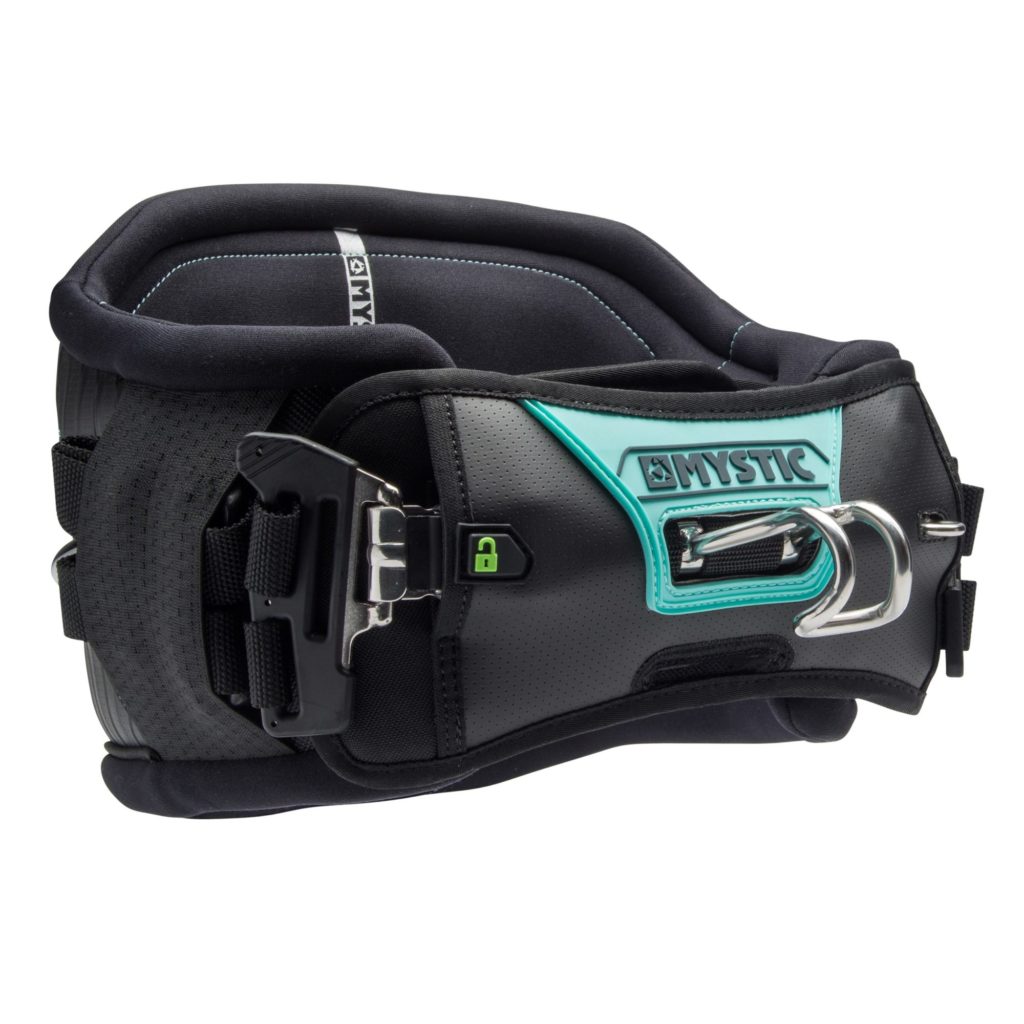
As the name suggests, these wrap around the rider’s waist. Sitting on top of the hip bones and below the rib cage, they use the body’s profile to keep them in place. As such, a comfortable fit is essential to ensure that they work affectively, and don’t cut a rider’s session short from discomfort. They offer more freedom and flexibility, and make a natural choice for any rider progressing on from being a beginner.
Advantages
Fitting
For those with limited flexibility, waist harnesses are easier to put on than seat harnesses; no bending down or fiddling with straps required. Simple place around the waist and fasten.
Flexibility
Reduced webbing and the absence of leg straps provides riders with greater flexibility; spins, flips, loops, carving and jumps are easiest with a waist harness; particularly beneficial for wave and freestyle.
Stability
A higher centre-of-pull from the kite gives greater rider stability when jumping, making unwanted rotations less likely. This also provides riders with greater leverage for higher raleys (short jumps), which are the basis for many tricks.
Kite Feedback
Waist harnesses enable riders to ‘feel’ the kite more, as the power comes through the lower back. Being able to feel the power of the kite is important when setting up for tricks. Flexibility in the back is used to bare downwind and then load up the kite for extra jump height.
Bar Position
Particularly with freestyle, it’s useful to a rider to be able to see the bar, so they can see what they are doing to the kite; with mega-looping, for example. Waist harnesses enable a higher bar position that places the bar comfortably in front of the rider for good visualisation.
Choice
As waist harnesses are by far the most popular choice, manufacturers offer a huge range to choose from. Variations in colour, style, materials, flexibility, warmth and size ensures that there is a waist harness for anyone.
Limitations
Sizing/Comfort
As mentioned, correct sizing and comfort is fundamental to ensuring that the harness works correctly, and these two factors should be the primary consideration when choosing. Too loose, and it will ride up the body and become an irritation. Too small and it won’t fit on. A single harness will offer a reasonable amount of adjustment. Ideally, you want to choose a size that gives you capacity either side to cater for body weight fluctuations. We recommend you come to our shop for a proper fitting. If this isn’t possible, please read our Returns Policy in-case of incorrect fit.
Cost
Due to more complex designs and manufacturing processes, waist harnesses are more expensive than seat harnesses. But when investing in a sport that has no running costs, this shouldn’t hurt too much!
Soft Shell VS Hard Shell
If you’ve decided to go for a waist harness, you now need to choose if you’d like a hard shell or soft shell. Seat harness are always soft.
Hard Shell
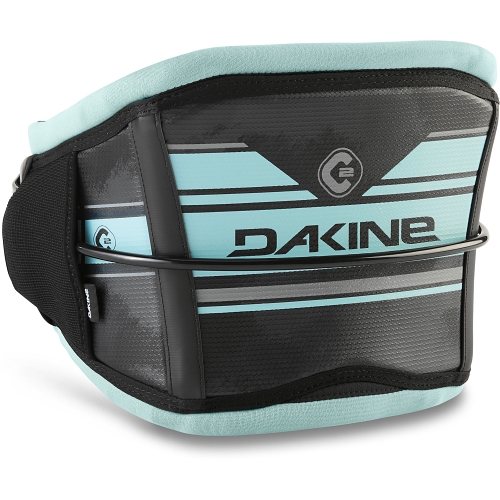
These have been on the market for about ten years, and are constructed with hard-form inserts. Plastic and carbon fibre back panels offer more support that can benefit riders who have reduced back strength. They are also popular with free-stylists, who find the extra support adds comfort when performing tricks, like jumps and kite loops. If fitted correctly, they are less liable to rotate or ride up the body, which, again, is favourable for aggressive freestyle and competition.
Their rigid design means that they can be uncomfortable to certain body shapes, and if not fitted correctly, so they are not for everybody. They also tend to be more expensive, and offer less flexibility for sizing.
Hard shells are the choice for those wanting extra back support, and those looking to get into aggressive riding styles like big-air and freestyle.
Soft Shell
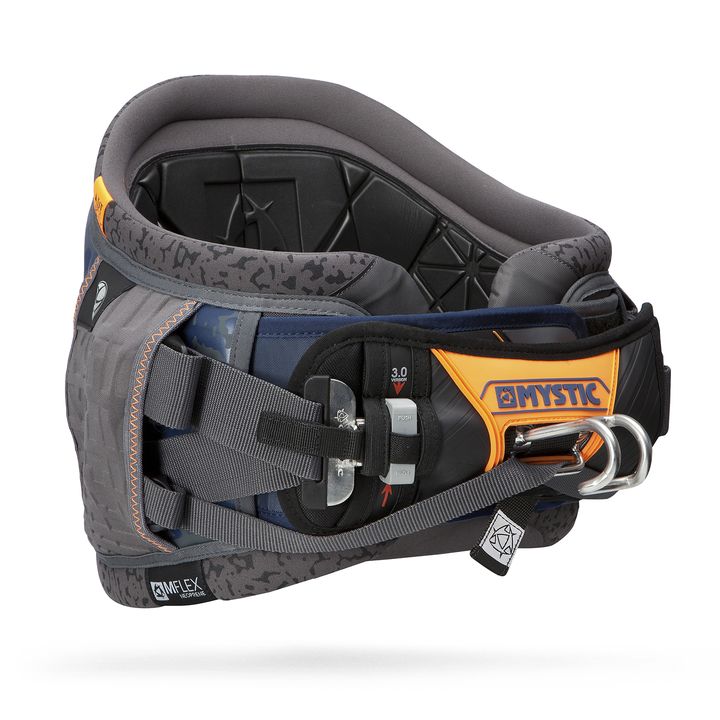
These are of course the opposite. They provide comfort over support, and are an ideal choice for those with less lively aeronautical ambitions. The absence of solid panelling keeps the cost down, and ensures that the kite’s pull is spread well across the rider’s back and sides. They also fit a greater range of sizes, so are a better choice for those with fluctuating body sizes.
Their softer design means that they are more liable to rotate and move around. This can be an advantage in disciplines that deliver power from both the front and side of the torso; wave riding, for example.
Soft shell are best for those with good all-round body strength wanting comfort over support.
Spreader Bars
These are what attach you to your bar and lines, and therefore the kite. It fits across the front of the harness.
Inverted Hook
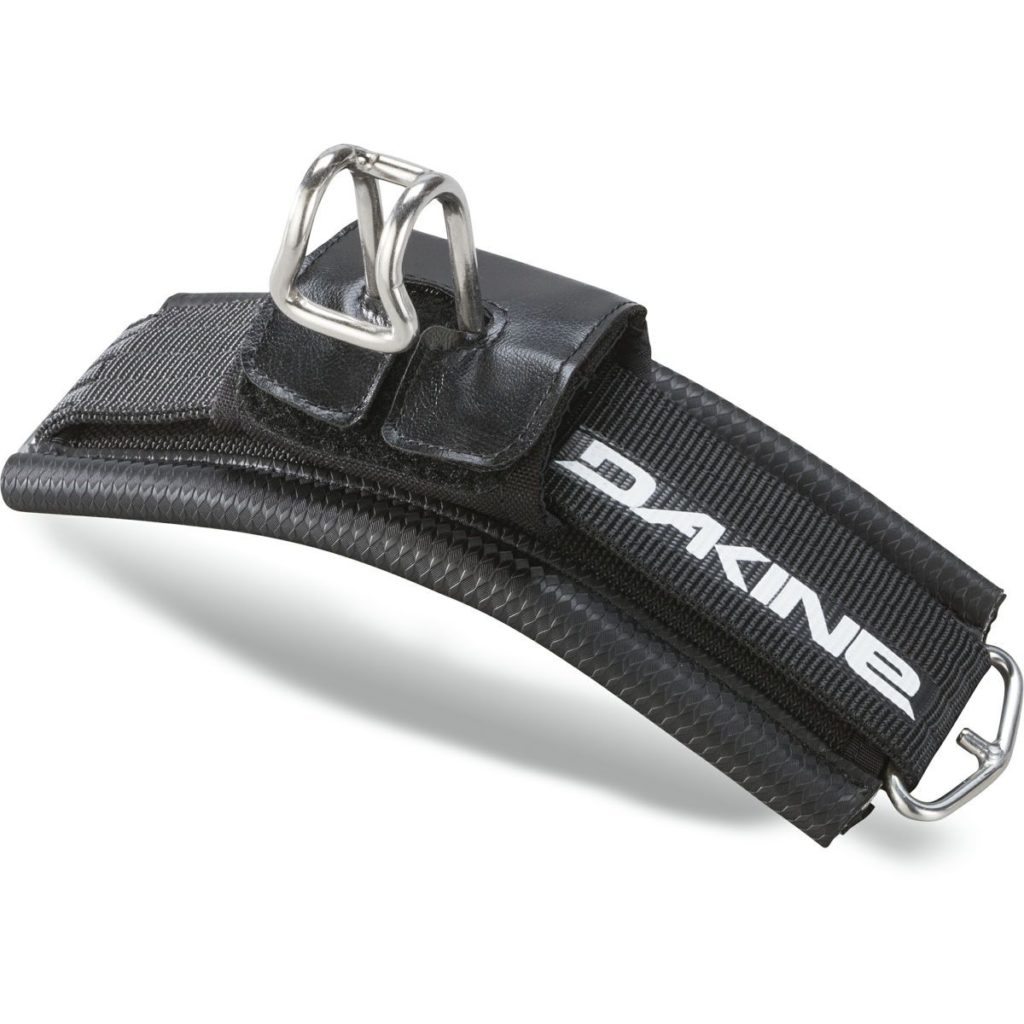
Until recently, there was only one mainstream choice available; the inverted hook. These are the standard design that are used for almost all styles of kitesurfing, including learners, lawn mowers (cruisers), and freestylers, and these will do for the vast majority of riders.
Slider Spreader Bar
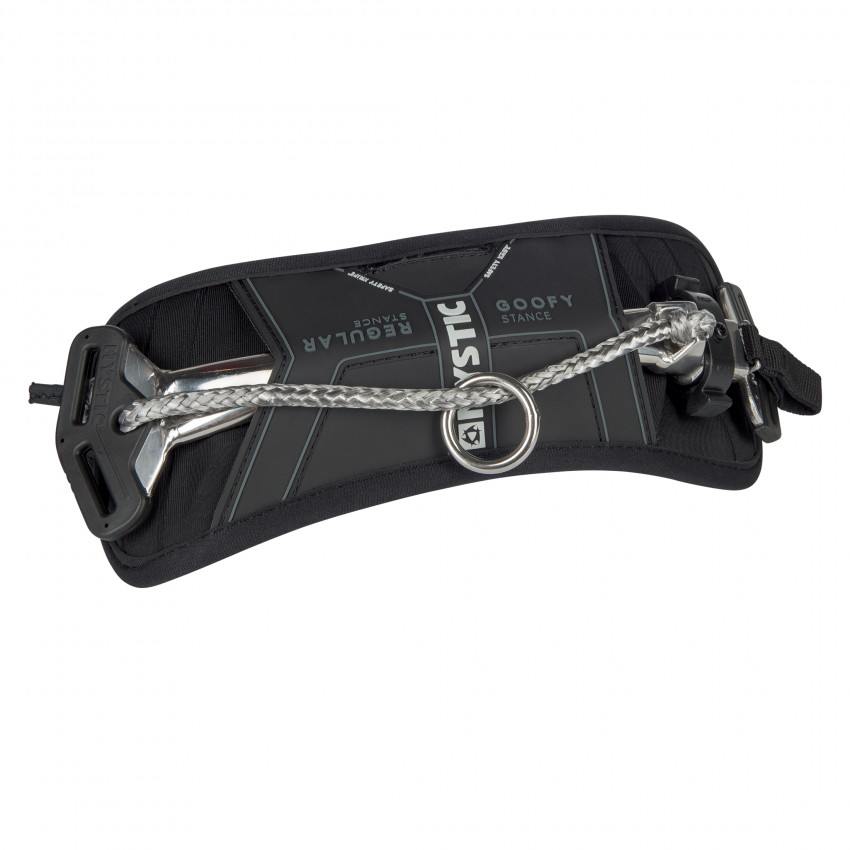
Wave riding requires the need to fly the kite both within the power zone and to the side of the wind window. This requires a spreader bar that allows for the bar and lines to move freely with the kite from left to right; namely the slider spreader bar. They are specifically for use when wave riding, as users will find that flying a kite at the side of the wind window, whilst carving, that little-bit easier and more comfortable.
Sizing
As mentioned, correct sizing of a harness is important to ensure that it works properly. The best way to know if a harness is right for you is to try before you buy. For online purchases, take a look at these Size Charts for Mystic, Dakine, Manera and Ion Kitesurf.
In Conclusion
So there’s a break-down of the harness selection process. We hope you’ve enjoyed reading our harness buyer’s guide. Remember, comfort is king, and we often say that the best harness is the one that feels comfortable when trying it on. If you’re still unsure or have any questions, give our experienced and knowledgable sales team a call.
